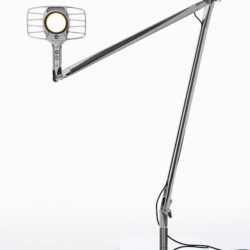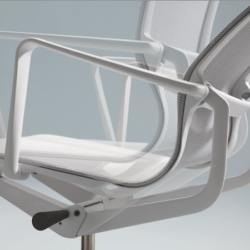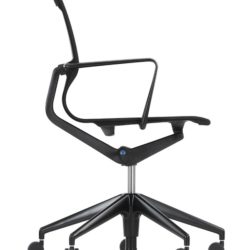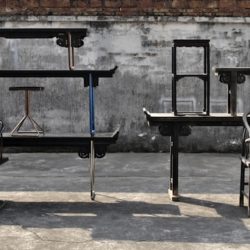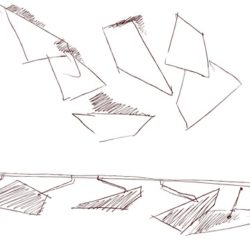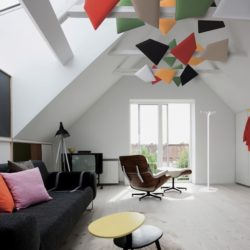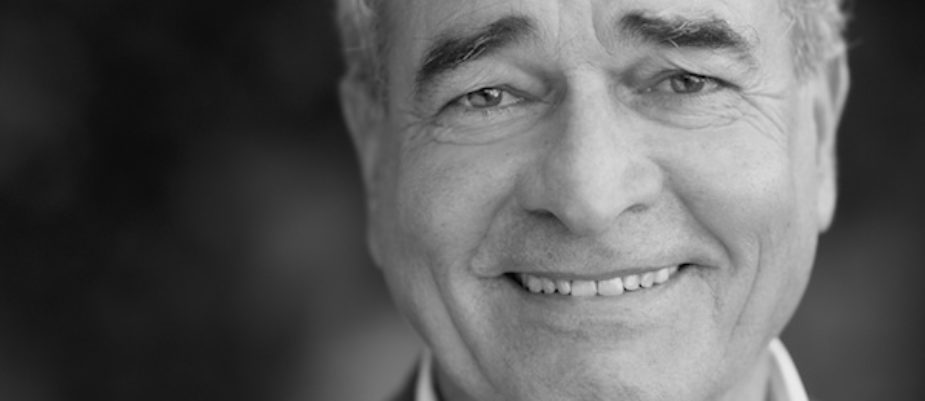
After the Master in Mechanical Engineering, thanks to the years spent at Kartell’s in charge of the development of projects of furniture and plastic laboratory equipments, Alberto Meda has gained an incomparabile expertise on plastics. But for over thirty years his activity as industrial designer for some of the most important companies in the world, has led him to work in different fields of design, with all kinds of materials and to deal with different technologies.
5 years ago his son Francesco, industrial designer too, started to collaborate introducing new ways of designing 3.0 oriented.
Is the planning model of Studio Alberto Meda the same everywhere in the world and with all kinds of companies or design products or does the approach change to the different situations?
A.M. The view remains steady, conscious of the real needs. The designer’s effort is to build objects to solve problems or satisfy wishes. Even the way to do it is the same as in the first stage: first the idea and then the sketches. But we have to understand cohesions and materials and to control the process, and here some differences can be found.
What are the main changes in your ways of working during last years?
A.M. Once we used to design in 2D; 3D has brought about a change allowing to reduce times and check the design, which accustomed companies to new ways of making prototypes.
F.M. We actually use a 3D printer to realize prototypes and SolidWorks CAD software was very usefull to define, for example, the details of Physx Chair.
The Studio Alberto Meda operates on quite different markets and fields. Are there any conceptual “contaminations” and common elements between the many design areas you deals with?
A.M. There is a recurrent need to break clean-cut boundaries: an office chair is not only a chair for the office, but passes from the workplace to the home, from the home to the public spaces. We aim at comfort, so you can be comfortable at home as in the office or in the restaurant.
F.M. As far as contaminations and ways of working in a globalized market are concerned, I find quite interesting the experience “Orme Cinesi”, developed together with a Chinese company on the Web only. I was asked to find a guide concept to refashion traditional Chinese furniture to suit western tastes. So I hybridized the metal tube, evoking the Bauhaus language, with Chinese stylistic features and a new collection was born.
What scenarios and evolutions do you expect for the office and the ways of working in the near future?
A.M. I think that the company agreements will increasingly be oriented to ways of working also within the private circle or alternative places from the traditional offices. Yet, people will still need to meet to share ideas, since a direct communication is much richer. New meeting places will be found; the office comes out into the streets.
What’s the difference between the design of a chair with marked physical features and the design of objects, that feature immateriality and frequencies?
A.M. The common approach is to favour our wellbeing, and that may depend upon our physicality or by the environmental one. A chair is comfortable when there is a link between the body physicality and the object. Lighting or acoustics relate with perception, but they affect the atmosphere and also help to comfort in practical terms. A wrong light can be an inconvenient and too much noise can make it impossible to have a conversation and kill our thoughts.
F.M. As far as Flap is concerned, we worked both on the functional aspects related to acoustic comfort and on the design, with a repeatable module that creates an undefined pattern breaking the usual orthogonal scheme. We gave a new shape to a “device” of environmental ergonomics.
Captions:
1 Alberto Meda.
2 Alberto Meda with his son Francesco.
3 Hybrid chair Hydrochair, design Alberto and Francesco Meda (2012) for Alias.
4 Lamp with LED 8w light Otto watt, design Alberto Meda e Paolo Rizzatto
(2011) for Luceplan.
5 Chair Physix, design Alberto Meda
(2012) for Vitra.
6 Lightness is a 3D structure made by 3D printer, design Alberto Meda
(2013) Limited Edition.
7 Dialog between chinese and western culture “Orme Cinesi”, design Francesco Meda (2012) for Schoeni Art Gallery, Hong Kong.
8 Phono absorbent panel system Flap (sketch), design Alberto and Francesco Meda (2013) for Caimi Brevetti Snowsound Division.



